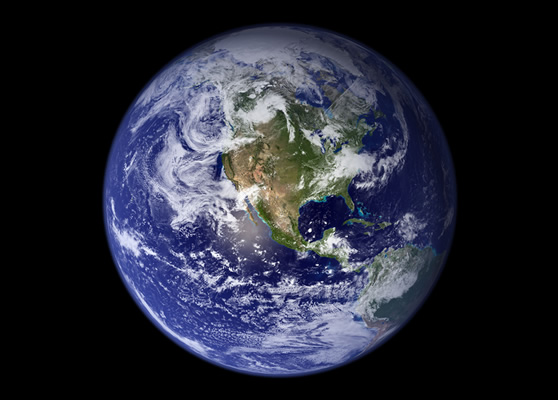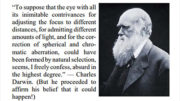Our solar system is filled with amazing planets, but none are perfect for life except the earth.
Mercury is the closest planet to the sun. It gets very hot and very cold. It has a very slow spin. The side facing the sun is heated to 800 (F) while the side away from the sun is cooled to –298 degrees (F).
(See Related Creation Content)
Venus is hotter than Mercury, yet farther away from the sun. Venus has an atmosphere 90 times thicker than earth’s. Heat is trapped in the clouds and heats the entire planet to 931 degrees (F).
Mars is similar to earth in many ways. A day on Mars is 24.7 hours. It is tilted 25 degrees, just two more degrees than earth. At its warmest, it can get to be a comfortable 67 degrees (F). It has two small moons. But Mars is smaller than earth. The gravity on Mars is only a third of the earth’s. Without enough gravity, Mars is unable to hold a larger atmosphere. What atmosphere it has is made of the gases we cannot breathe. Without much of an atmosphere, many meteoroids hit Mars. It also gets very cold at night.
Jupiter is the largest planet in our solar system. It is ten times smaller than the sun and ten times larger than the earth. Jupiter spins faster than any other planet, with a day of 9 hours and 55.5 minutes. Its fast spin causes tremendous storms. The big red spot on Jupiter is a huge hurricane.
Saturn is the second-largest planet in our solar system and has the largest set of rings. It is almost twice as far away from the sun as Jupiter is. Saturn is a gas giant. As one descends into the atmosphere, the pressure, temperature, and gravity greatly increase. The core of the planet is boiling hot and radiates more heat out into space than it receives from the sun.
Uranus is tilted on its side with its axis pointed at the sun. If the earth’s axis was pointed at the sun, one hemisphere would always be boiling hot and the other would be freezing cold. Uranus is four times as far from the sun as Jupiter and twice as far from the sun as Saturn.
Neptune is the farthest gas giant from the sun. It is almost four times larger than the earth. Its strong gravity traps harmful gases in its atmosphere.
The utter lifelessness of other planets in our solar system illustrates the fact that earth is unique and specially created for life.
Related Articles
-
- Latest ‘Life from Outer Space’ Claim Is Shot Down
- Newfound Planet Is ‘100 Percent’ Sure to Have Life?
- Ancient Oxygen-Rich Rocks Confound Evolutionary Timescale
- A Few Reasons an Evolutionary Origin of Life Is Impossible
- The Search for New Planets
- Evolution and the Population Problem
- ===================================




